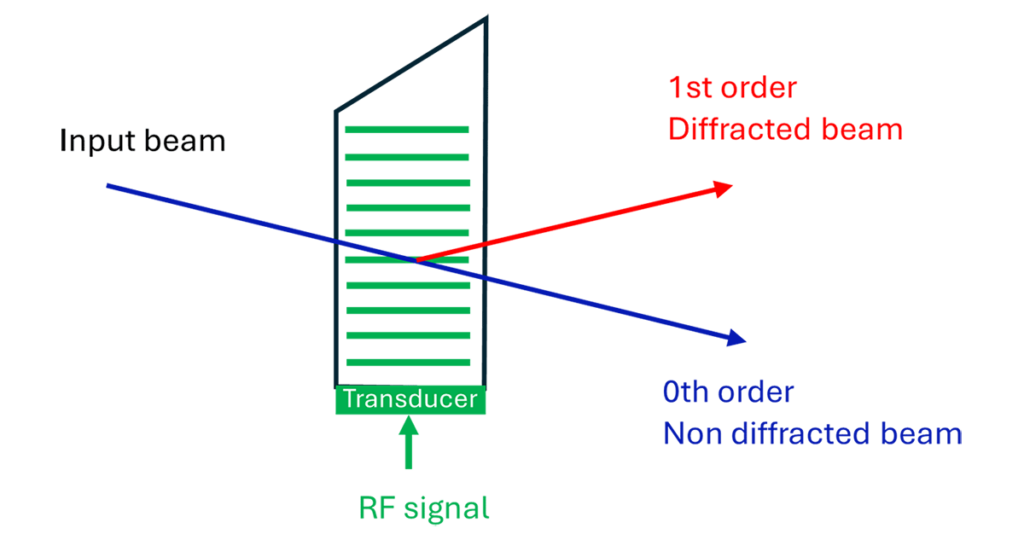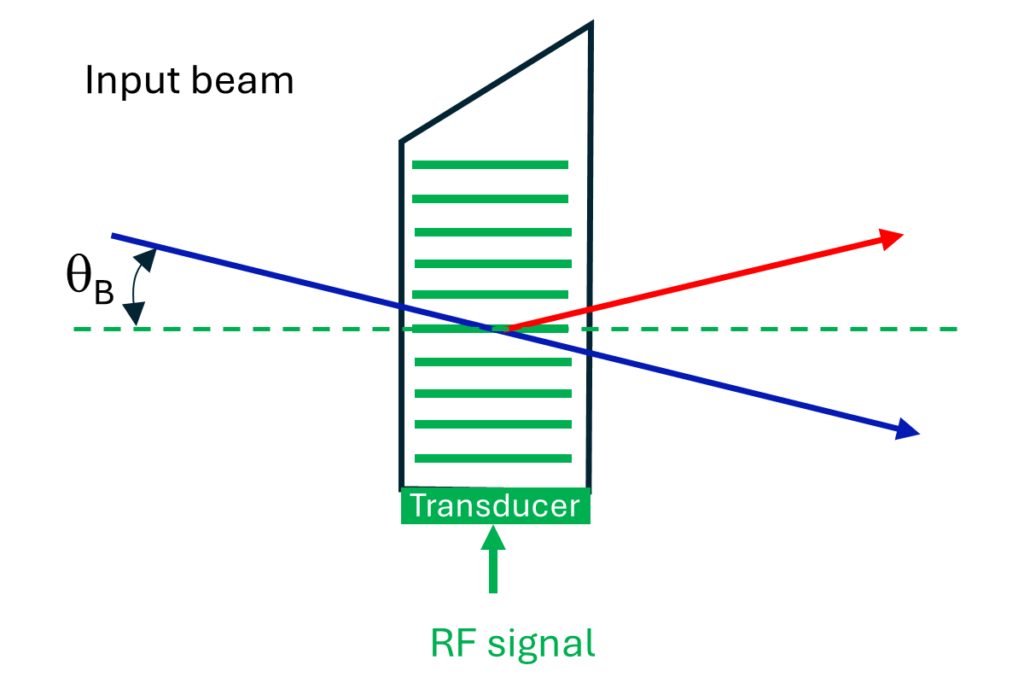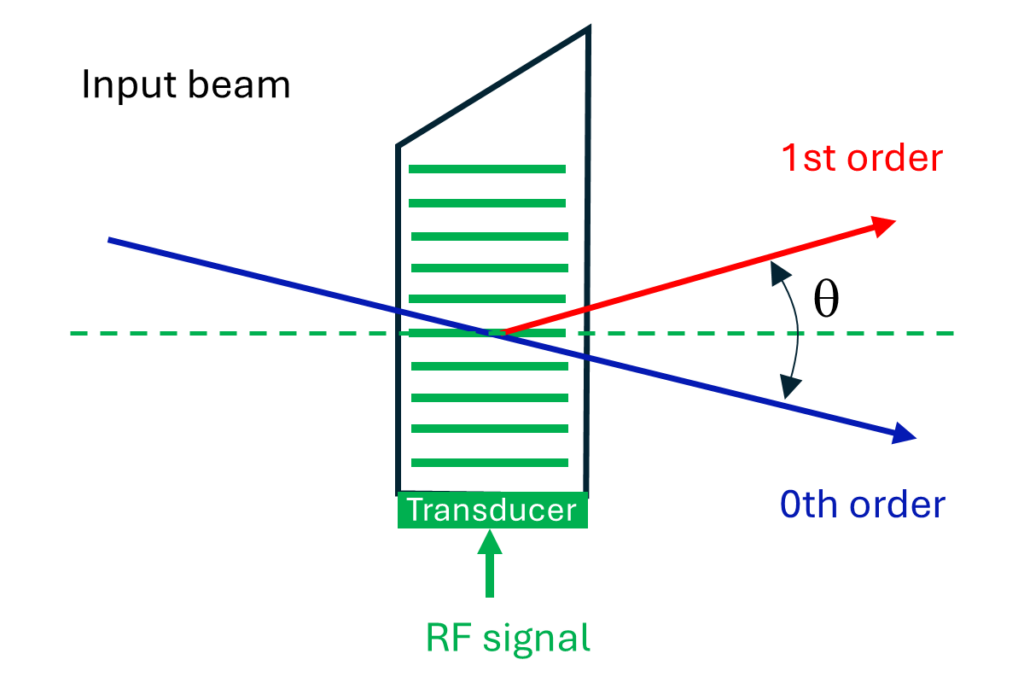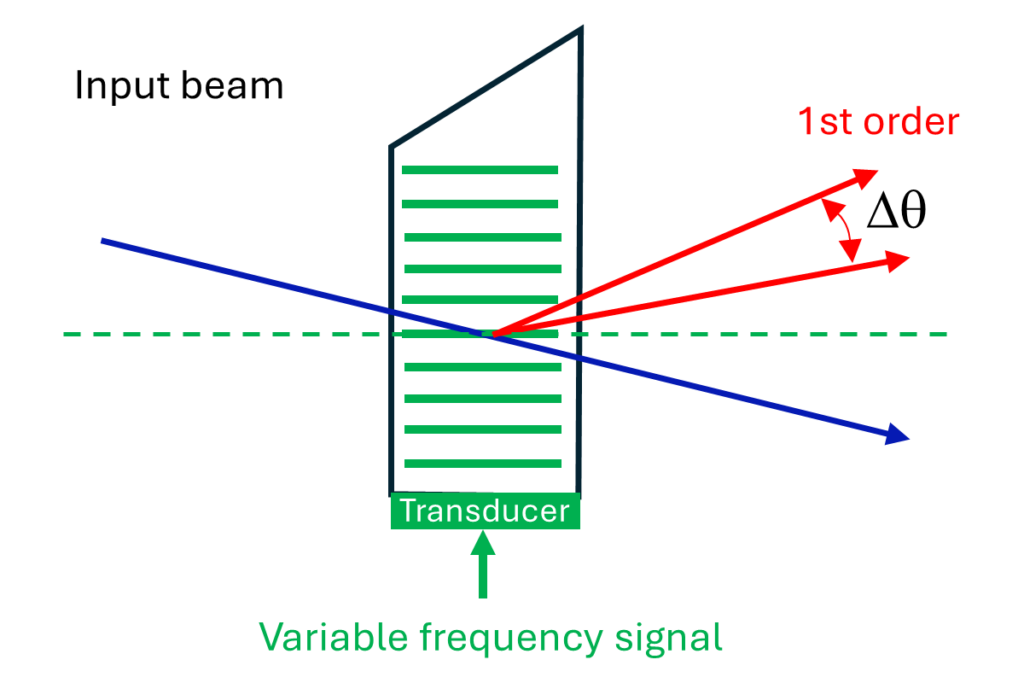Acousto-optic glossary
In acousto-optics, many technical terms are used to describe how components work. This page provides definitions of the main terms used, for greater clarity.
Bragg cell:
“Zero” order,”1st” order:
The zero order is the beam directly transmitted through the cell. The first order is the diffracted beam generated when the laser beam interacts with the acoustic wave.

Bragg angle (⊖B):

Separation angle (⊖):
The angle between the zero order and the first order.

RF bandwidth: (∆F)
For a given orientation and optical wavelength there is a particular RF frequency which matches the Bragg criteria. However, there will be a range of frequencies for which the situation is still close enough to optimum for diffraction still to be efficient. This RF bandwidth determines, for instance, the scan angle of a deflector or the tuning range of an AOTF.
Maximum deflection angle: (∆⊖)
The angle through which the first order beam will scan when the RF frequency is varied across
the full RF bandwidth.

